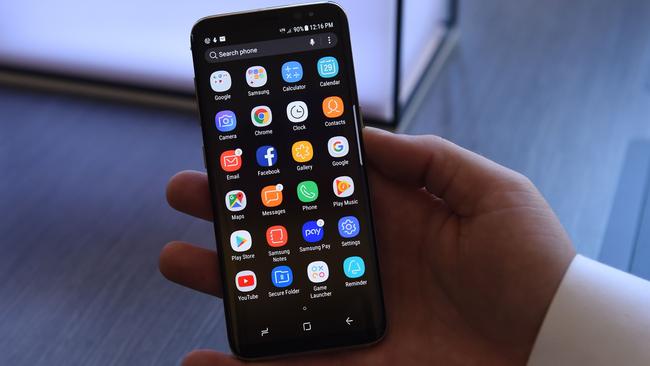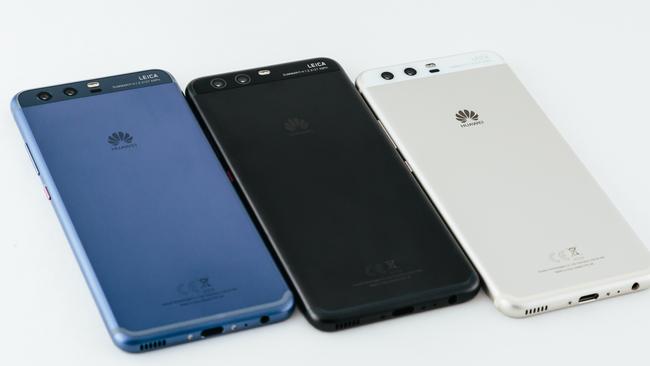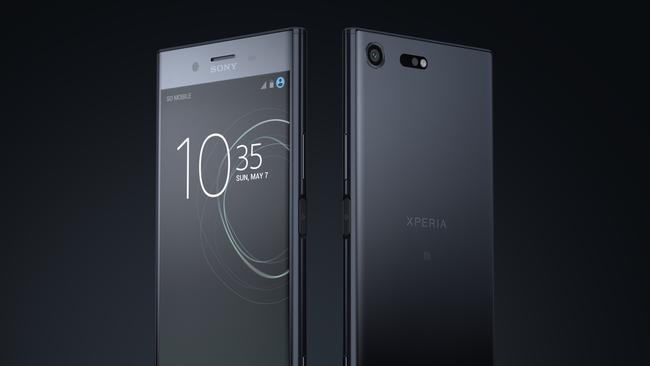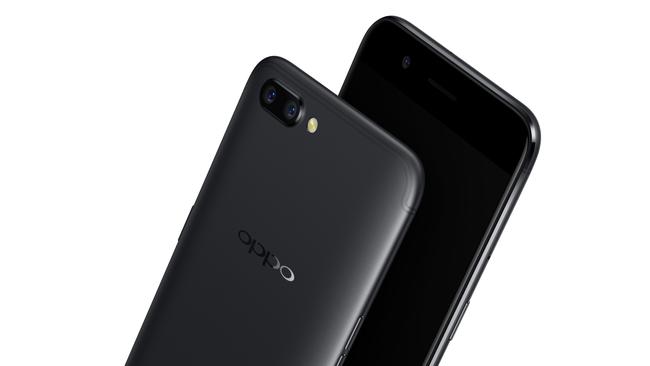Is it worth waiting for the iPhone 8 or should you go with one of the many Android options?
WE are only days away from the launch of Apple’s iPhone 8 and strong rumours suggest what we can expect. But will it be better than Android?
THE question everyone keeps asking is should they wait for the iPhone 8 or is there a better option to buy now?
We decided to give you an in-depth breakdown of the best phones currently on the market to help you make an informed decision.
IPHONE 8
Having kept to an almost identical design for its flagship smartphones since 2014, Apple is set to provide a fresh overhaul for the forthcoming iPhone 8.
The tech giant is tipped to use its annual September event to announce the iPhone 7s and iPhone 7s Plus, which will offer moderate updates from the predecessors — the main change will be swapping the aluminium case for glass to allow for wireless charging.
But Apple is also expected to use the event to launch the radically redesigned iPhone 8, which could really get tongues wagging.
The bold new design is expected to include a stainless steel frame between two glass panels, which slightly curve to give the appearance of one continuous sheet of glass.
Apple’s iPhone 8 is expected to have an advanced edge-to-edge 5.8-inch OLED display that will rival the impressive 83 per cent screen-to-body ratio seen on Samsung’s Galaxy S8 and S8+.
Using finalised schematics leaked from the manufacturer of Apple’s next-generation smartphones, pictures show what the iPhone 8 is going to look like when it’s unveiled later this year.
To achieve the 83 per cent screen-to-body ratio, Apple has removed the physical home button from the front of the display.
As the leaked design doesn’t include a fingerprint scanner on the rear of the device, it is believed the TouchID sensor will be embedded in the display.
The design also shows a new dual-lens camera system that will feature the same optical zoom capability as the iPhone 7 Plus’ camera, LED flash and a microphone.
Surprisingly, the camera module on the iPhone 8 is oriented vertically, which is likely to do with the internal hardware engineering needed to fit the dual camera, front camera and new 3D infra-red sensors on the smaller device.
However, it could be designed to specifically to enable the new augmented reality features Apple is expected to reveal at the event.
While being unveiled this coming September, the release of the iPhone 8 might not come until early 2018 if recent rumours of manufacturing difficulties prove to be correct.
Pros:
• Full OLED display
• Tipped to have 83 per cent screen-to-body ratio
• Could have augmented reality features
Cons:
• Full glass display could make phone fragile
• There will likely be no headphone jack
• Might not have USB-C charger
SAMSUNG S8

Easily the sexiest release of the year, the ‘Infinity Display’ of the S8 Plus maximises the nearly bezel-less screen by using the curved glass to remove the left and right borders, with the top and bottom including only what is needed for things like the front-facing camera and iris scanner.
As the tallest flagship phone the company has produced, the S8+ measures a whopping 6.2-inches, while the S8 has a much more humble 5.8-inch display.
Despite the S8+ having such a long display, it measures only 73.4mm wide, making it thinner than the iPhone 7 Plus and easier to operate in one hand — this coming from a man genetically cursed with little sausage fingers.
When watching 16:9 content on the 6.2-inch display you will have black bars on the side of the content, however if watching cinematic content shot in 2.35:1 or 2.39:1, the entire display will be filled, offering marvellous content.
To help with the bezel-less display, Samsung has replaced the physical home button with virtual buttons and the branding has been moved to the rear of the phone because, honestly, there is nothing sexy about SAMSUNG staring at your face every time you look at the device.
Also located on the back of the phone is the rear camera, which has been made to sit almost flush with the screen
The fingerprint scanner also sits on the back of the phone to the left of the camera and while aesthetically pleasing, it’s a little awkward for unlocking the device at times and can lead to some nasty smudges on your camera.
Thankfully there is the option for passcode facial recognition and iris scanning to avoid this issue when unlocking the device.
The 12-megapixel rear camera has been kept the same specifications as the S7, which is a little disappointing.
The Galaxy S8 features the IP68-rated water and dust resistance you’ve come to expect from Galaxy phones.
As for the battery life, the S8 Plus has three display settings, allowing you to run the phone at either a WQHD+ (2960 x 1440), FHD+ (2220 x 1080) or HD+ (1480 x 730) resolution, with the lower tiers obviously offering more battery life.
With the default FHD+ setting, the 3,500 mAh battery allows you to expect around eight hours battery life, which is pretty standard and not all bad with wireless adaptive fast charging.
Also included on the phone is Bixby — Samsung’s own personal assistant to rival Siri and Google Assistant.
Pros:
• Slim, sleek and sexy — this design is phenomenal
• High screen to body ratio of 84 per cent
• No exploding battery saga
Cons:
• Phone is very fragile without protective case
• Fingerprint scanner in strange location
• Camera hasn’t seen a huge update from its predecessor.
The Samsung Galaxy S8 and S8+ cost $1199 and $1349, respectively.
HUAWEI P10 AND P10 PLUS

Having already crushed Apple and Samsung in China, the world’s third most popular smartphone manufacturer is trying to achieve similar impact locally with the P10 and P10 plus.
The smaller phone and its larger counterpart have 5.1-inch and 5.5-inch LCD displays, offering 1920x1080 and 2560x1440 pixels, respectively.
The company’s latest flagships also look very similar to Apple’s 2014 iPhone 6S — great news for those who like the iPhone design but not iOS.
Unlike other Huawei devices, the fingerprint scanner has been removed from the rear of the device and placed below the display, where it also doubles as a physical home button.
It has smooth, curved corners, minimal side bezels and is available in gold and blue and black.
Like its predecessor flagship smartphone, the Leica-branded dual camera set up is one of the best aspects of the device.
Located flush at the top left of the device is the dual camera set up, which has a 12MP RGB sensor working alongside 20MP monochrome shooter.
Both sensors capture images independently and combine them into one photo — this is supposed to enhance detail and contrast.
Huawei’s P10 and P10 Plus also offer a front-facing 8MP camera, which includes a Leica-branded portrait mode.
Shooting in portrait will use new facial tracking software that detects more than 190 points on the human face to ensure the camera focuses for the best possible shot.
Both models offer Huawei Supercharge, which can take the battery from 0 to 25 per cent in 15 minutes or 0 to 88 per cent in an hour.
Unlike its competitors, the P10 and P10 Plus are not water and dust resistant, which could be a deal breaker for those who find extra comfort in the setting.
Pros:
• Very similar to the look and feel of iPhone for people who don’t like Android
• Dual camera provides excellent picture quality
• Cheaper than other smartphones on the market
Cons:
• Not water or dust resistant
• The P10 has a short battery life
The Huawei P10, P10 Plus cost $899 and $1099 respectively.
SONY XPERIA XZ PREMIUM

Featuring the same technology used in Sony’s Bravia TVs, the company has developed the first
smartphone in the world to include a 4K HDR display.
This means it has enough pixels to be able to display four times the level of detail seen on Full HD 1080p screens, while High Dynamic Range transforms your viewing experience by offering greater detail in bright and dark areas.
To put this into perspective, the XZ Premium’s display has 3840 x 2160 pixels, which far exceeds the 1080 x 1920 and 1440 x 2960 pixel resolutions offered by the iPhone 7 Plus and Samsung Galaxy S8, respectively.
While the smartphone obviously delivers very sharp and clear images, it’s hard not to think the benefit of such technology is slightly lost on a 5.5-inch display — plus setting the device to its most vibrant and bright settings will burn through the phone’s 3,230mAh battery.
It must also be mentioned that you need internet over 15 Mbps to stream content available in 4K, which is extremely limited for mobile devices in Australia at this point in time.
That aside, I still can’t help but love the feature — if only for the fact I get to tell people my smartphone is better quality than their TV.
The 4K HDR display isn’t the only trick shot on the device, with the XZ Premium holding the ability to record incredibly slow motion video.
While all of the competitor smartphones on the market can only record slow motion at maximum of 240 frames per second, the XZ Premium can record video at 960fps — making it four times slower than any other smartphone.
Unfortunately Sony has downgraded from the 23MP rear camera seen on its predecessor, although its 19MP replacement still offers high quality images.
The device also has a 13MP front-facing snapper, which is capable record videos in Full HD resolution.
Sony might not have moved too far away from the brand’s signature rectangular shape, but the XZ Premium has been tweaked to have a much curvier body than its predecessors.
Sadly there is a thick bezel around the screen — especially at the top and bottom — which looks slightly ugly when compared to the sleek design of Samsung’s S8.
Sony has once again placed fingerprint scanner on the side of the device and the headphone jack at the top, while the bottom is home to the USB-C charging port.
The glossy Gorilla Glass 5 finish of the XZ Premium adds a nice touch of class to the design, although it is very susceptible to grubbily little fingerprints, which is something to keep in mind.
Sony’s strong links to audio can be seen on the device, which delivers detail and clarity from the stereo speakers.
Like the earlier model, the XZ Premium is protected against water spills and dust with IP65/68 certification.
The XZ Premium also has 64GB of storage, with the ability to expand with a microSD card.
Pros:
• 4K HDR display
• 960fps super slow motion
• Quality speakers built in to the phone
Cons:
• Doesn’t look as sexy as other phones
• Fingerprints are very noticeable
• Battery life still not the best
OPPO R11

If you want to make the switch to Android from an iPhone, this is the perfect device — because it’s pretty much a replica of Apple’s design.
The rear panel has a premium metal unibody with a dual lens camera and flash layout that is almost indistinguishable to that of the iPhone 7 Plus.
Oppo’s R11 volume rocker, power key and SIM card tray are also very similar to the positioning found with Apple’s product.
The 5.5-inch full high definition screen almost blends into the edges of the phone, with the bezel measuring just 1.66mm wide — while impressive it can’t match Samsung’s S8 impressively high screen to body ratio of 84 per cent.
While other Androids have the fingerprint scanner on the rear, Oppo has moved it to the home button on the front of the device, which is another similarity to Apple.
Oppo has also included capacitive buttons beside the R11’s oval-shaped home button, which only illuminate when pressed.
The bottom of the phone also includes a single speaker, headphone jack and microUSB port — it’s disappointing to not see USB-C.
Despite having a similar layout to the iPhone 7 Plus, Oppo’s camera surprisingly offers better specs than it’s competitor.
The R11 has a 16MP standard and 20MP telephoto rear dual camera, while the iPhone 7 Plus only has 12MP standard and 12MP.
Oppo’s device also comes with a 20MP forward facing camera, which is far better than the iPhone 7 Plus’ 7MP.
The R11 comes powered by a Qualcomm Snapdragon 660 with 4GB of RAM and 64GB of internal storage, which can be expanded to 256GB using a microSD card.
Oppo’s 3,000 mAh battery offers flash charge technology — 0 to 70 per cent in just thirty minutes — and will easily last for a whole day with medium use.
The design isn’t the only thing taken from Apple, with the Android 7.1.1 operating system remarkably similar to the iPhone’s iOS.
This means those who like Apple’s app layout, settings and camera interface will feel right at home, although Android fans might not dig the vibe.
Pros:
• Familiar feel to Apple products
• Excellent camera — one of the best on the market
• Great battery life
Cons:
• No NFC meaning you can’t use the device for mobile payments
• Lack of water resistance
• No USB-C charging port
The Oppo R11 retails for $649
What phone do you think is the best? Continue the conversation in the comments below or with Matthew Dunn on Facebook and Twitter.



